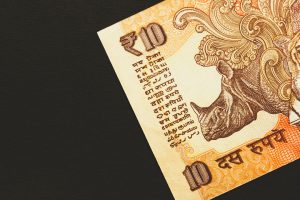Forex trading is a lucrative opportunity to make money by buying and selling currencies. However, it can also be a high-risk venture that demands knowledge, experience, and discipline. In order to succeed as a forex trader, you must learn how to practice trading forex effectively. In this article, we will explain the steps you need to take to get started with forex trading and become a profitable trader.
Step 1: Learn the Basics of Forex Trading
The first step to practicing forex trading is to understand the basics of the market. Forex trading involves buying and selling currencies, and the goal is to make a profit from the difference in the exchange rates. The forex market operates 24 hours a day, five days a week, and it is the largest financial market in the world with an average daily turnover of about $5 trillion.
To start learning about forex trading, you can read books, watch online tutorials, or attend forex trading courses. Some of the basic concepts you need to understand include currency pairs, bid-ask spread, leverage, margin, and trading psychology.
Step 2: Open a Demo Account
A demo account is a practice account that allows you to trade forex without risking any real money. It is a great way to get started with forex trading and practice your strategies before you start trading with real money. Most forex brokers offer demo accounts that you can use to test your skills and learn how the market works.
When opening a demo account, you should choose a broker that is regulated by a reputable authority and offers a trading platform that suits your needs. You should also choose a demo account that has the same features as a real account, including trading conditions, market data, and customer support.
Step 3: Develop a Trading Strategy
A trading strategy is a set of rules that you follow to enter and exit trades. It should be based on your trading goals, risk tolerance, and trading style. There are many trading strategies that you can use in forex trading, including technical analysis, fundamental analysis, and price action trading.
To develop a trading strategy that works for you, you need to test your ideas on a demo account and analyze your results. You should also keep a trading journal to record your trades, emotions, and mistakes. This will help you to identify patterns and improve your trading skills.
Step 4: Practice Risk Management
Risk management is a crucial part of forex trading. It involves managing your trades in a way that minimizes your losses and maximizes your profits. Some of the risk management techniques you can use include setting stop-loss orders, using trailing stops, and diversifying your portfolio.
You should also manage your trading capital carefully. Never risk more than you can afford to lose, and always have a backup plan in case your trades go against you. You should also avoid trading with borrowed money or using excessive leverage, as this can lead to significant losses.
Step 5: Start Trading with Real Money
Once you have practiced forex trading on a demo account and developed a profitable trading strategy, you can start trading with real money. However, you should start with a small trading account and trade with a low leverage until you gain more experience and confidence.
You should also continue to practice risk management and follow your trading plan. Don’t let emotions or greed cloud your judgment, and always be prepared to cut your losses if necessary.
Conclusion
Practicing forex trading requires patience, discipline, and a willingness to learn. By following the steps outlined in this article, you can develop the skills and knowledge you need to become a successful forex trader. Remember to start with a demo account, develop a trading strategy, practice risk management, and trade with real money only when you are ready. With time and practice, you can become a profitable trader and achieve your financial goals.






